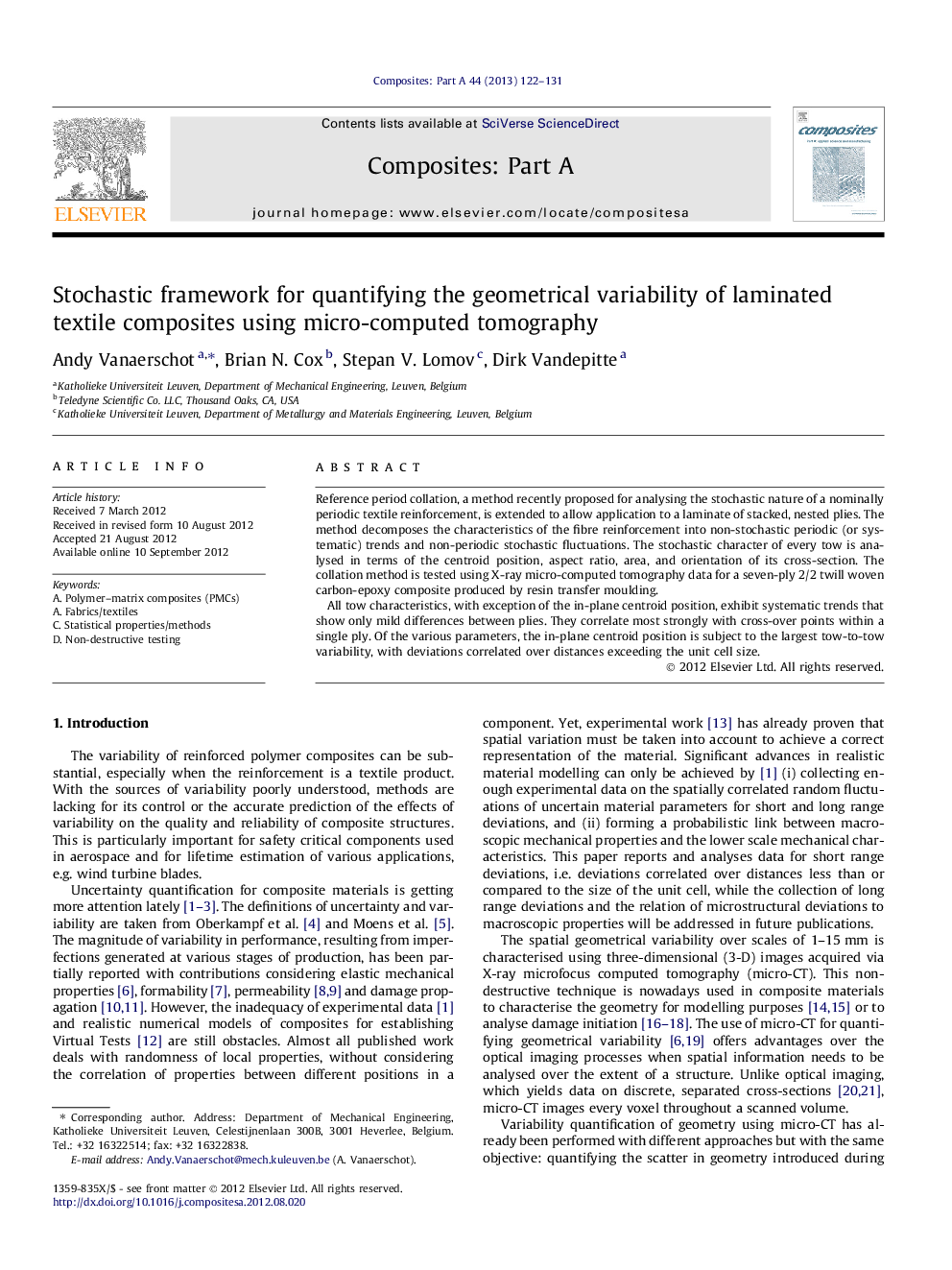| Article ID | Journal | Published Year | Pages | File Type |
|---|---|---|---|---|
| 1466469 | Composites Part A: Applied Science and Manufacturing | 2013 | 10 Pages |
Reference period collation, a method recently proposed for analysing the stochastic nature of a nominally periodic textile reinforcement, is extended to allow application to a laminate of stacked, nested plies. The method decomposes the characteristics of the fibre reinforcement into non-stochastic periodic (or systematic) trends and non-periodic stochastic fluctuations. The stochastic character of every tow is analysed in terms of the centroid position, aspect ratio, area, and orientation of its cross-section. The collation method is tested using X-ray micro-computed tomography data for a seven-ply 2/2 twill woven carbon-epoxy composite produced by resin transfer moulding.All tow characteristics, with exception of the in-plane centroid position, exhibit systematic trends that show only mild differences between plies. They correlate most strongly with cross-over points within a single ply. Of the various parameters, the in-plane centroid position is subject to the largest tow-to-tow variability, with deviations correlated over distances exceeding the unit cell size.
